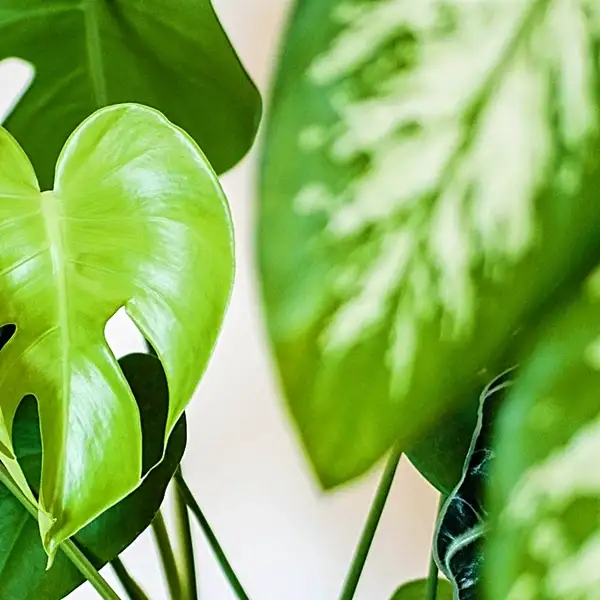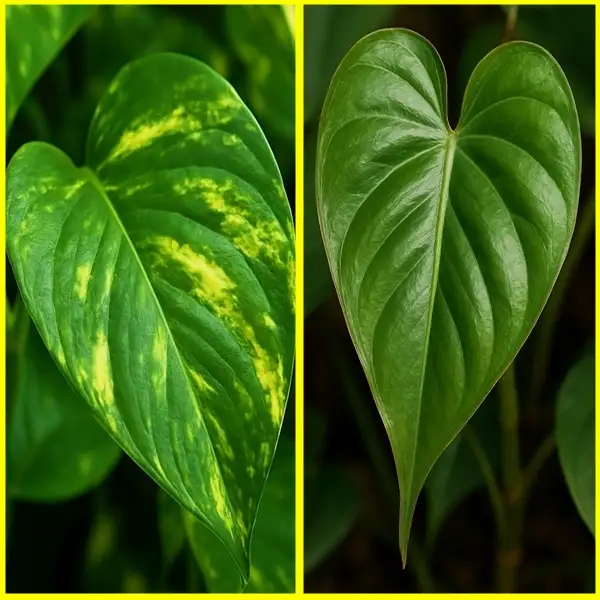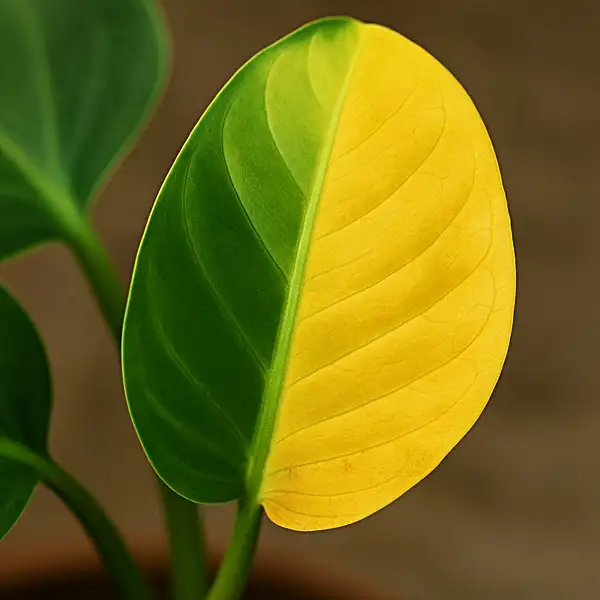Key Takeaways
| 🔍 What You’ll Discover | 🌱 Why It Matters |
|---|---|
| How to create the perfect home environment | Helps your philodendron feel at home—even indoors |
| The secret to healthy roots and lush foliage | Sets the foundation for long-term growth and beauty |
| What lighting truly works (and what doesn’t) | Prevents leggy stems and scorched leaves |
| How to spot trouble before it’s too late | Saves your plant from pests and rot—quickly and naturally |
| The right way to prune and shape | Encourages a fuller, more vibrant plant without shocking it |
| When and how to repot like a pro | Gives your plant room to breathe and thrive |
| The kind of love your philodendron understands | How to care for a Philodendron plant? Turns daily care into a joyful, mindful routine |
Basics of Philodendron Plant Care
Philodendrons are a versatile houseplant variety valued for their lush, tropical foliage & relatively easy upkeep. Valued for their air-purifying attributes & aesthetic influence, they enliven any space with a dash of verdant vigor. Philodendron plants belong to Araceae family & include over 200 species – each with unique leaf shapes & growing habits.
As perennial plants native to warmer climates like rainforests in Central America & Caribbean, philodendrons are accustomed to warmer temperatures alongside higher levels of humidity.
A home setting can emulate these conditions conveniently by maintaining appropriate sun exposure levels, moisture content, temperature controls & periodic fertilizing practices.
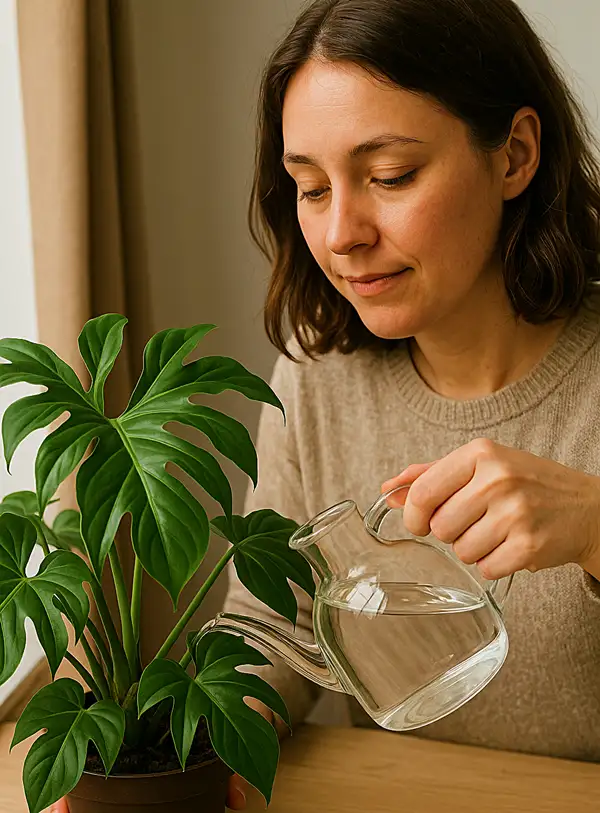
Choosing beginner-friendly varieties like Heartleaf Philodendrons will make your plant-keeping journey rewarding as they are durable against most common houseplant pests & diseases. Notably adaptable by nature, caring for your philodendron plant involves being mindful not just about hydration but also its light usage patterns.
Allure of a philodendron lies in its ability to purify indoor air while adding visual appeal. Hence it becomes crucial that you understand their care requirements well.
An old saying seemed apt here:
‘Best time to plant a tree was 20 years ago. The second-best time is now.’
So let’s dive deep into understanding how we can properly nurture our green companions!
6 Ideal Growing Conditions for Healthy Philodendrons
Growing conditions may vary slightly depending on the specific type of philodendron you have chosen as your botanical companion; however, some general guidelines remain relevant across different varieties in this diverse genus.
| Condition | Recommended Range/Details | Notes & Tips |
|---|---|---|
| Temperature (Daytime) |
|
|
| Temperature (Nighttime) |
|
|
| Humidity |
|
|
| Light |
|
|
| Seasonal Adjustments |
|
|
| Air Circulation |
|
|
3 Components: Choosing the Right Soil Mix for Your Philodendron Plant
One of the foundational pillars of nurturing any plant successfully revolves around finding its perfect soil partner.
For Philodendrons too – despite being relatively relaxed concerning diverse growth mediums – providing them with rich but well-draining soil mix guarantees sustained growth & overall health.
| Soil Component | Purpose | Details & Tips |
|---|---|---|
| Peat Moss |
|
|
| Perlite |
|
|
| Organic Matter (Compost) |
|
|
7 Expert Watering Tips and Techniques: Keeping your Philodendron Hydrated
The balance lies here – keeping your leafy friend hydrated while avoiding some basic mistakes.
| Watering Aspect | Guidelines | Tips & Additional Notes |
|---|---|---|
| Watering Frequency |
|
|
| Amount of Water |
|
|
| Watering Method |
|
|
| Signs of Overwatering |
|
|
| Signs of Underwatering |
|
|
| Seasonal Variation |
|
|
| Humidity Support |
|
|
4 Pro Philodendrons’ Lighting Preferences & Suitable Placement Strategies
| Lighting Factor | Details | Care Tips |
|---|---|---|
| Light Intensity |
|
|
| Preferred Placement |
|
|
| Too Little Light |
|
|
| Too Much Light |
|
|
5 Common Diseases and Pests: Protecting Your Philodendron
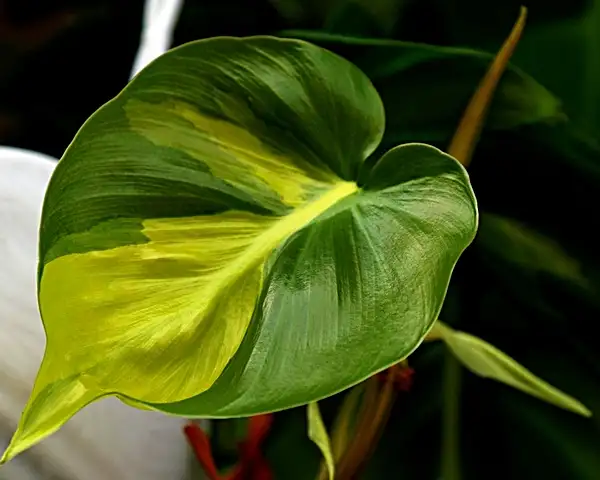
Despite being relatively resistant to many common pests & diseases, any green companion can become vulnerable under stress – often unintentionally induced by improper care practices such as overwatering, low light or dry air.
- Leaf traits offer essential cues: curling, axis reversal, color changes & leaf drop all signal imbalances that demand prompt attention.
- Root-rot symptoms, fungal infections & pest invasions further elevate risk levels, leading to a rapid decline in overall vitality.
- Neither neglect nor panic should guide our response; instead, reinforce balanced care routines & employ organic treatments – neem oil or appropriate insecticides are wise tactics here. By doing so, you can rest assured that your beloved green buddies will continue flourishing, vividly enhancing your shared living space.
| Issue | Symptoms | Prevention & Treatment |
|---|---|---|
| Spider Mites |
|
|
| Mealybugs |
|
|
| Aphids |
|
|
| Root Rot (Pythium, Phytophthora) |
|
|
| Leaf Spot Diseases |
|
|
Fertilizing Your Philodendron: Feeding for Best Growth
While philodendrons are not heavy feeders, a steady supply of nutrients helps maintain their vibrant foliage & overall plant vigor.
| Fertilizer Type | Application Frequency | Notes & Tips |
|---|---|---|
| Balanced Liquid Fertilizer (e.g., 10-10-10) |
|
|
| Slow-Release Granules |
|
|
| Organic Fertilizers (e.g., compost teas) |
|
|
(4 STEPS) Pruning and Shaping: Encouraging Bushier Growth
| Why Prune? | Steps to Prune | Propagation Tips |
|---|---|---|
| Encourages bushier, fuller growth & maintains plant shape |
|
|
My 3 Bonus Trimming Tips
- With vining types like Heartleaf or Brasil Philodendrons, trimming back leggy stems can prompt branching, resulting in a denser, healthier-looking plant.
- Do not discard healthy cuttings! Many philodendrons propagate easily in water or moist soil, offering a perfect opportunity to expand your collection – or share with a fellow plant lover.
- Keep in mind that too much pruning at once can shock your plant, so stagger major trims over a few sessions when necessary.
When and How to Repot Your Philodendron The Right Way
Philodendrons aren’t fast growers, but over time, their root systems will demand more room.
5 Signs That Your Philodendron Needs Repotting
A good rule of thumb is to repot every 2–3 years or when you notice –
| Signs You Need to Repot | Pot Size & Soil Recommendations | Aftercare Tips |
|---|---|---|
|
|
|
Best Time to Repot Philodendrons
Spring is best time to repot as it aligns with plant’s natural growth surge, allowing it to settle in more quickly.
Final Thoughts: Cultivating a Lasting Bond
Tending to a philodendron is more than just a hobby – it is a quiet dialogue with nature within your living space.
These tropical marvels return every ounce of care in form of vibrant leaves, cleaner air & peaceful energy. Like any meaningful relationship, the key lies in attention, patience & understanding subtle signals.
3 Golden Tips for Beginners
- Keep a journal if you are just starting out – note when you water, mist, or repot.
- Over time, patterns emerge, helping you refine your plant-care instincts.
- With thoughtful consistency & a willingness to learn, your philodendron will thrive for years, becoming not just a décor element but a green companion rooted in your everyday rhythm. 🌿
Frequently Asked Questions
How do you care for an indoor Philodendron?
Provide indirect light, water when top inch of soil dries & use a well-draining mix with peat & perlite. Keep humidity up with misting or a humidifier, fertilize monthly in growing seasons & prune for shape & health.
Do Philodendrons need direct sunlight?
No! They prefer bright, indirect light. Direct sun can scorch leaves while too little makes them leggy. Place near a north-facing window or in filtered light.
What are main Philodendron houseplant types?
Popular types include trailing Heartleaf & Brasil, plus upright varieties like Xanadu & Selloum. Each offers unique leaf shapes & growth habits suited for indoor spaces.


